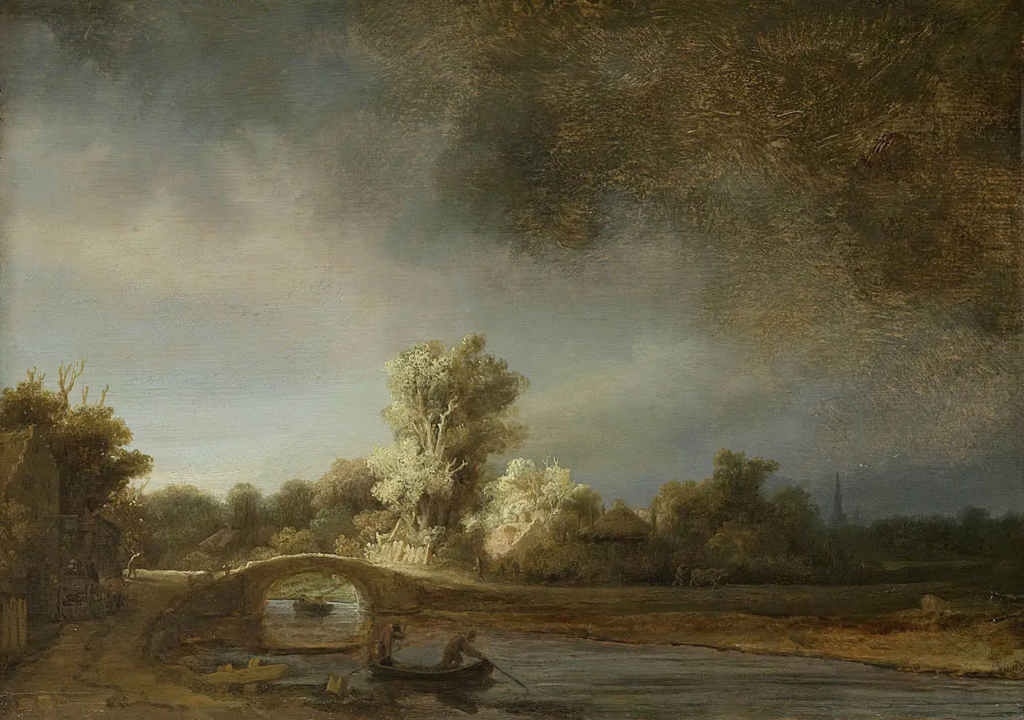
The definition of Landscape as a genre – A genre that typically captures the presence of nature but can also focus on human-made features or disturbances of landscapes.
This term originates from the Dutch word landschap, which originally meant “region, tract of land” however it acquired the artistic connotation, “a picture depicting scenery on land” later on.

16th Century: ‘Landscape’ as an independent genre did not emerge in the Western tradition until the Renaissance in the 16th century.

17th Century: Classical Landscape was born. These landscapes were influenced by classical antiquity and sought to illustrate an ideal landscape recalling Arcadia, a legendary place in ancient Greece known for its quiet pastoral beauty.
Even as landscapes became acceptable as a genre in the 17th century, they were still often seen and created as settings for biblical, mythological, or historical scenes.

Late 18th Century to 19th Century: Landscape painting eventually gained prominence with the rise of Romanticism, and often continued to carry a religious significance. This was because people started appreciating landscapes much more and wanting to preserve it.
Romanticism was an emphasis on emotion and individualism as well as glorification of the past and nature. The main purpose for romanticism was that it celebrated the individual imagination and intuition in the enduring search for individual rights and liberty.
In between the years of 1826 and 1827, we had seen the first urban landscape photo taken by a French inventor by the name of Nicéphore Niepce. The influence of landscape photography led to decades of vitality in the world of painting, as artists were both inspired by photographic images and pushed beyond realism, and rethought the very nature of art.

20th Century: The world saw American photographers at the forefront of landscape photography, and this was because they had a rather vast and varied array of landscapes to photograph.
A lot of landscape images and portraits were taken during the Victorian era of photography, but it was in 1904 when Edward Steichen produced a photograph known as Moonlight: The Pond that landscape photography gained certain recognition in the art world. Another pioneer for landscape photography was Ansel Adams, one of the masters of photography of the 20th century.
